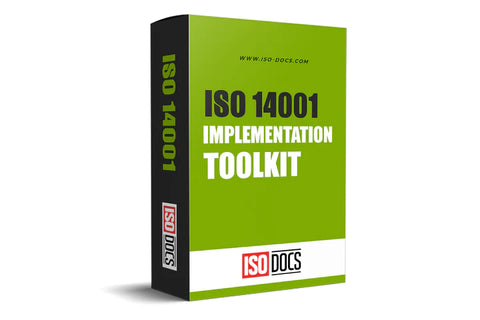Non-conformities And Corrective Actions Management Template
Introduction
Organizations that are ISO 14001 certified are required to have a system in place for managing nonconformities and corrective actions. Nonconformities are any deviations from the requirements of the ISO 14001 standard or the organization’s environmental management system.
Corrective actions are taken to address nonconformities and prevent them from happening again. The goal is to improve the organization’s environmental performance continuously.

What is Nonconformity?
A nonconformity is any deviation from the requirements of the ISO 14001 standard or the organization’s environmental management system.
There are four types of nonconformities:
- A major type I Nonconformity is an environmental issue that could significantly impact the environment.
- A minor type I Nonconformity is an environmental issue that will not likely dramatically impact the environment.
- A major type II nonconformity is an environmental issue that could significantly impact the environment.
- A minor type II nonconformity is an environmental issue that will not likely impact the environment significantly.
3. Corrected Nonconformity- A type III nonconformity is an environmental issue that has been corrected. This means that the problem has been fixed, and there is no longer any risk of causing environmental harm.
4. Prevented Nonconformity- A type IV nonconformity is an environmental issue that has been prevented from happening in the first place. This can be done through proactive measures such as risk assessment or training.
How To Manage Nonconformities And Corrective Actions?

If you find a nonconformity in your organization, you should take corrective action to prevent, correct, and eliminate it. Here are some tips on how to manage nonconformities and corrective actions:
- Establish a procedure for identifying, documenting, and investigating nonconformities.
- Take immediate corrective action to prevent, correct, and eliminate Nonconformity.
- Keep records of all corrective actions taken.
- Periodically review the effectiveness of corrective actions.
- Take preventative action to reduce the likelihood of nonconformities occurring in the future.
Methods To Identify Non-Conformities
One of the essential requirements of ISO 14001 is identifying nonconformities and implementing corrective actions. This is important because it helps businesses continuously improve their environmental performance. When it comes to identifying nonconformities, several different methods can be used.
- The most common method is the use of environmental audits. Audits can be conducted internally or externally, and they involve assessing a business’s environmental management system to identify any areas of improvement.
- Another method that can be used to identify nonconformities is the analysis of environmental data. This data can come from various sources, including monitoring devices, environmental reports, and customer feedback. By analyzing this data, businesses can identify trends and patterns that may indicate areas of improvement.
- Once nonconformities have been identified, businesses must take corrective action to address them. The type of corrective action will depend on the severity of the Nonconformity. For minor nonconformities, corrective action may involve changing procedures or processes. Corrective action may require implementing new policies or technologies for more severe nonconformities.
How To Implement Nonconformity And Corrective Action Procedures?
When a nonconformity occurs, it must be recorded, and corrective action must be taken to prevent it from happening again. The corrective action must be proportionate to the seriousness of the Nonconformity. For example, if a minor nonconformity is found, the corrective action might be to revise a procedure. If a significant nonconformity is found, the corrective action might be redesigning a process.
Corrective action aims to eliminate the causes of nonconformities to prevent them from happening again. Corrective actions must be planned and carried out in a structured way.
Here are some tips on how to implement corrective action in your organization:
- Establish a system for recording and investigating nonconformities. This system should be available to all employees to report nonconformities.
- When a nonconformity is reported, investigate it promptly and thoroughly to identify its root cause.
- Once the root cause has been identified, put a corrective action plan to prevent the Nonconformity from happening again. This plan should be proportionate to the seriousness of the Nonconformity.
- Implement the corrective action plan and monitor its effectiveness. Ensure all employees are aware of the corrective actions that have been put in place.
- Regularly review your system for recording and investigating nonconformities to ensure that it is effective and efficient.
Instructions To Use The Template

All yellow indicated numbers in the Nonconformities and corrective actions management need action to be taken. Below are the details:
1. Provide the Revision History of the document
- Revision Number: in the order of 00,01,02, etc.
- Date: Revision Date of Document in dd-mmm-yyyy
- Prepared By: Name of the person who prepared the document
- Reviewed By: Name of the person who reviewed the document after revision
- Approved By: Name of the person who approved the document after revision
- Description: Describe the revision
2. Insert Company Name
3. Type either of the below as applicable
- IMS – Integrated Management system i.e ISO 9001:2015, 14001:2015, 45001:2018 all
- QMS – Quality Management system i.e., ISO 9001:2015
- EMS – Environmental Management system i.e., ISO 14001:2015
- OHSMS – Occupational Health and Safety Management system i.e. ISO 45001:2018
4. Can add as being followed by the Organization
5. Add any other category as per the Organization
6. Add to the list as per the Organization’s working module, can modify as per requirement
7. Sample NC Communication flow displayed in Figure 2, modified as per Organization
8. Sample Rejected Tag shown in Figure 3, modified as per Organization
9. Add the applicable audience as per the Organization
10. Modify as per the Organization.



